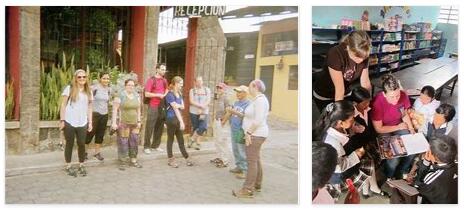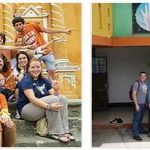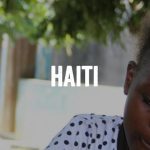The higher education system in Guatemala
In the university system, Guatemala has made some progress over the past twenty years. The universities of Guatemala are largely autonomous and thus determine their teaching staff and the allocation of study places independently. Although they manage themselves, they are financially supported by the state. The institutions are controlled by the Ministry of Education, the Ministerio de Educación. The Council of Private Higher Education (CEPS) is specifically responsible for the accreditation of study programs in the private sector.
State and private Universidades
There is only one state universidad (university) in Guatemala, which has some regional offices in other parts of the country. It is also the oldest university and was founded in 1676. The remaining thirteen private Universidades have been added since the 1960s. They are all based in Guatemala City.
Historical significance of the universities
The Guatemalan educational institutions have so far suffered from the conditions in the country. Both the civil war that lasted from 1960 to 1996 and the military regime of the 1980s made expansion in their favor almost impossible. The population is largely impoverished and many children cannot even graduate from primary school. They start working very early to support their families.
The Guatemalan universities were at times places of resistance : demonstrations against the government took place here – mostly peacefully, but sometimes also armed. Professors and students often paid for this with their lives.
The study system in Guatemala
The academic year in Guatemala runs from January to November. Some universities divide the year into semesters. The lessons consist of lectures, seminars and courses. Student performance is calculated in Créditos Académicos. A degree in Guatemala consists of an undergraduate and a postgraduate degree.
The undergraduate degree: Baccalaureus and Bachiller
There are various types of academic degrees for the undergraduate courses of study in Guatemala. A bachelor’s degree is roughly equivalent to a baccalaureus or bachiller. Normally, such a degree takes four years. A special specialization does not take place at this time. Rather, the focus of the course is on a broad general education.
An exception is the medical course, in which the titulo de Licenciado is studied. It takes about seven years to graduate. In technical subjects such as engineering or architecture, professional titles, the Títuli Profesionales, are awarded.
The study of a job-related degree in Guatemala consists of an introductory general education part in these areas, followed by the practical part. The final examination consists, among other things, of a written thesis and its oral presentation.
The postgraduate studies: Maestria and Maestro
After the first academic title, you can continue your studies. The further Maestria or Maestro course is comparable to a German master’s course and takes about one to two years.
Practical study components now play a bigger role. At the end of the study period, a comprehensive written work is created, the Tesis de Maestría, which must be defended orally.
Guatemala is a poor country. More than half of the population is considered poor. 12 percent of the population even lives below the international poverty line, so they are extremely poor. The proportion of poor among the Indians is even higher.
Of course, poverty also affects everyday families. In the countryside, people mostly live in simple huts. 13 percent of people living in rural areas have no running water. In the city, people with a little more money live in houses with electricity and running water. But there are also slums where people live miserably.
Organized criminal gangs, a drug war and corruption are unfortunately part of everyday life in Guatemala. Several thousand people are murdered every year. There are robberies and blackmail. Security guards are standing around in many places. Nevertheless, there is of course a “normal” everyday life for families.
More about Guatemala
What could you be called
If you lived in Guatemala, a country located in Central America according to mysteryaround, your name might be Carlos or Gustavo, Juliza or Maira. You would have two surnames: one from your father and one from your mother. If your family weren’t very poor, you’d get a piñata for your birthday. This is a colorful paper mache figure that is hung up, for example in a tree. It’s filled with candy. Blindfolded, the birthday child and his guests take turns hitting the piñata with a stick until it rains candy.
On average, every woman in Guatemala has three children. So the probability that you would have siblings would be pretty high. As a girl, you’d rather wear dresses and skirts than pants. Traditional clothing is often embroidered in bright colors. If you want to buy something, for example in one of the small shops or in the market, you pay with Quetzales. Ten quetzals are about one euro.






